Quality Rating 5: Information and Policies
Instructions
To meet the requirements for Administrative Policies and Practices: Information and Policies: ADM 1.5, your family handbook, written agreement or contract include your program’s:
- Mission and/or philosophy statement
- Policies and practices for:
- Health
- Safety
- Positive Behavior Practices
- Tuition/Enrollment
- Inclusion of Children with Special Health Needs and Disabilities
- Communicating with families
- Physical Fitness
- Nutrition
- Curriculum (Family Child Care / Child Care Center)
- Child Assessment (Family Child Care / Child Care Center)
- Activity planning and implementation (School-Age Only)
The Policy or Statement Builder interactives provide step-by-step guides for creating your policies.
Mission and/or Philosophy Statement
It is important for families to know what you believe about children, their development, and the goals of your program. Your mission and / or philosophy statement communicates these beliefs in clear and simple language. Your statement might also include your beliefs about the importance of engaging families in your program.
What does the documentation look like?
The information you provide for families includes your program’s mission and/or philosophy statement written in clear and simple language. If you submitted a philosophy statement for Developmentally Appropriate Practice: Environment: DAP 1.2, include it in your written information for families.
Health
Encouraging children’s healthy growth and development can have lasting effects on the children and families in your program. Your program’s health policies communicate to families the importance you place on their child’s health. These policies describe the steps you take to maintain a healthy environment, ways you support children to develop healthy habits, and other practices you follow to ensure that children are healthy and strong.
What does the documentation look like?
Your documentation describes the health policies and practices you follow in your program. This list gives you an idea of different health topics.
- Wellness / Illness
- Medication
- Allergy / Asthma
- Sanitation
- Personal Hygiene (examples: hand-washing, tooth brushing)
- Immunizations
- Sunscreen
- Opportunities for physical activity and play
Safety
As a child care provider or teacher, you understand the great responsibility you have to ensure that children in your program are safe. This includes keeping children physically safe and providing an emotionally-safe environment where children can develop and learn.
Your policies describe the many steps you take to keep children safe. These policies help ensure that everyone in your program knows and understands their role in maintaining a safe environment.
What does the documentation look like?
Your documentation clearly explains your program’s safety policies and practices. This list offers you an idea of different safety topics.
- Fire Drills
- Emergency Evacuation Plan
- Medical Emergency Procedures
- Drop Off / Pick Up Procedures
- Transportation
- First Aid / CPR Training or Certifications
- Security Procedures
- Inclement Weather
Positive Behavior Practices
Positive behavior practices are the steps you take to promote children’s healthy social and emotional development. This includes specific strategies and techniques your program uses to encourage positive behavior and to avoid negative behavior or situations before they happen.
What does the documentation look like?
The information you provide to families describes the positive behavior supports you offer to children and any specific strategies or techniques you use and why you use them.
Tuition/Enrollment
Your tuition policies help families understand the cost of your program and how you handle payment. While it is unnecessary to include actual tuition rates in your policy, you may include when and how you accept payment. Enrollment policies may include the number of children you accept to your program, when families can enroll their children, if you use a waiting list when your program is full, or other information you feel will be helpful for families.
What does the documentation look like?
Examples of tuition and enrollment topics include:
- Enrollment requirements – ex. age groups, number of children per age group
- Required forms
- Fee Schedule
- Late tuition fees
- Late pick up fees
- Transition practices for children entering or exiting your program
- Siblings
Inclusion
In an inclusive program, all children have access to and participate in the same routines, play, and learning experiences. This includes children with and without special health care needs or disabilities.
Inclusive practices benefit all children and families in many ways, and your Inclusive Policy communicates the steps you take to make sure all children are able to participate fully in your program. Including your program’s inclusion policies and practices in your handbook, written agreement or contract helps families clearly understand the ways you work to welcome and include all children in your program.
What does the documentation look like?
Inclusion policies may describe:
- What you do to welcome all children and families into your program, including children with special health care needs or disabilities
- Methods you use to meet each child’s individual needs
- Procedures you follow in working with professionals, such as speech therapists, physical therapists, and others
- How you participate as a team member and work with an IFSP or IEP team to make modifications and accommodations for children with special health care needs and disabilities
- Any specialized training you and your staff receive related to diverse populations of children in your program
- Access to specialized equipment or resources to support children with special needs
Look at your inclusion policies through the eyes of a parent whose child has special health care needs or a disability. What words sound welcoming and reassuring? How do the policies demonstrate exactly what you do to welcome all children into your program? Make any changes that will assure families that you will partner with them and work to meet their child’s individual needs.
Remember: For children with special health care needs or children with disabilities, getting needed services and being included can have significant impact on their lives and the lives of their family members.
Communicating with Families
Communication is a two-way street. You understand the need to communicate with families, and families benefit from knowing the importance of them communicating with you. Information about ways families can communicate with you shows them that you value their participation in their child’s program. Your communication policy might include how, when, and how often families can expect to receive communications from your program. Sharing ways families can initiate communication with you encourages positive two-way communication.
What does the documentation look like?
The written information in a handbook, written agreement, or contract clearly explains your policies for communicating with families, and how families can initiate communication with you.
Physical Fitness
Physical fitness lays the foundation for healthy, active lifestyles. It is helpful for families to know the steps you take to promote their child’s health and well-being. Information about your program’s physical fitness activities helps families understand the goals of your program and what is required of them. Families may ask: Do they need to provide suitable clothing on certain days or for certain activities? What opportunities does your program provide for children to be physically active? Do the children play inside and outside? This is your chance to inform and remind families about the importance of physical activity to their child’s healthy development.
What does the documentation look like?
The written information you provide for families includes clear information about your program’s approach to physical fitness.
Nutrition
Information on your program’s approach to healthy foods and snacks communicates the importance of healthy habits. Informing families about how your program handles snacks and meals also lets them know what to expect from your program. Are families expected to provide all snacks and meals for their child, or are meals provided? How does your program address special dietary needs? Are exceptions made for special occasions such as birthdays? The more information you provide to families, the better prepared they are to follow your guidelines and policies.
What does the documentation look like?
The written information you provide for families includes clear guidelines on food and nutrition policies.
Curriculum (Family Child Care and Child Care Center)
A curriculum outlines the goals and content you use for planning daily activities and learning experiences for children. It may also include information about the knowledge and skills targeted in those activities and experiences.
While families may know very little about curriculum, they will be interested in the many ways you plan activities to help children learn and develop. When families are informed about the goals you have for their child, they are in a better position to reinforce those goals at home. Your written information is another opportunity to remind families that they are partners with you in their child’s development and learning. It informs families of ways they can be active participants in that shared partnership.
What does the documentation look like?
The written information you provide for families includes a description of your program’s curriculum. Ask someone unfamiliar with your program, or child care in general, to read your description. Do they have a clear understanding of the type of activities you provide and the ways those activities promote development and learning? Clarify any information that may be confusing to families unfamiliar with best practices in child care.
Child Assessment (Family Child Care and Child Care Center)
Child assessment is used to measure and monitor children’s progress. It helps you better understand each child so you can develop meaningful activities that support every child’s growing knowledge and skills. Communicating your program’s approach to assessment helps families understand why you assess children’s progress, how the information you gather informs the activities you plan, and what they can expect to learn from you about their child’s progress.
What does the documentation look like?
A quality child assessment policy includes information such as:
- Why and how child assessment is used
- Types of assessments used
- How and when assessment information is shared with families
- How assessment information informs activities
Activity Planning and Implementation (School-Age Only)
Families benefit from information about your program’s approach to planning and carrying out activities, and how those activities reinforce children’s development and learning. When well informed, families are better able to support your program and participate as active partners in their child’s education. In addition to a description of activities, you can give families concrete steps to take by including fun activities they can do together to promote learning at home.
What does the documentation look like?
The written information you provide for families includes your approach to activity planning an what you do to deliver a quality program.
Policy or Statement Builder
Develop policies that are important for families to understand about your program. The Reflection Questions below will help you think about what you do in your program to capture it when creating your policies for your Family Handbook. Once you have spent time reflecting on the questions below, you’re ready to build your policies.
Reflection Questions
- How would you describe your programs mission and/or philosophy statement? What are the overall goals of your program?
- What are your policies and practices about health?
- What are your policies and practices around safety?
- What are your positive behavior practices?
- What are your policies and practices about tuition/enrollment?
- What policies are in place so that children with disabilities and children with special health care needs are included?
- How do you communicate with families?
- How do the children engage in physical activity?
- What are your guidelines about nutrition?
- How would you describe your curriculum?
- What kinds of child assessments do you use?
Policy Builder Resources
Use these optional PDF resources to reflect on your program’s practices and create your policies.
Technology Tips
Choose the way that the provided resources will be most useful to you.
You can:
![]() Download the PDF.
Download the PDF.
![]() Save the PDF.
Save the PDF.
![]() Print the PDF.
Print the PDF.
![]() Edit the PDF.
Edit the PDF.


